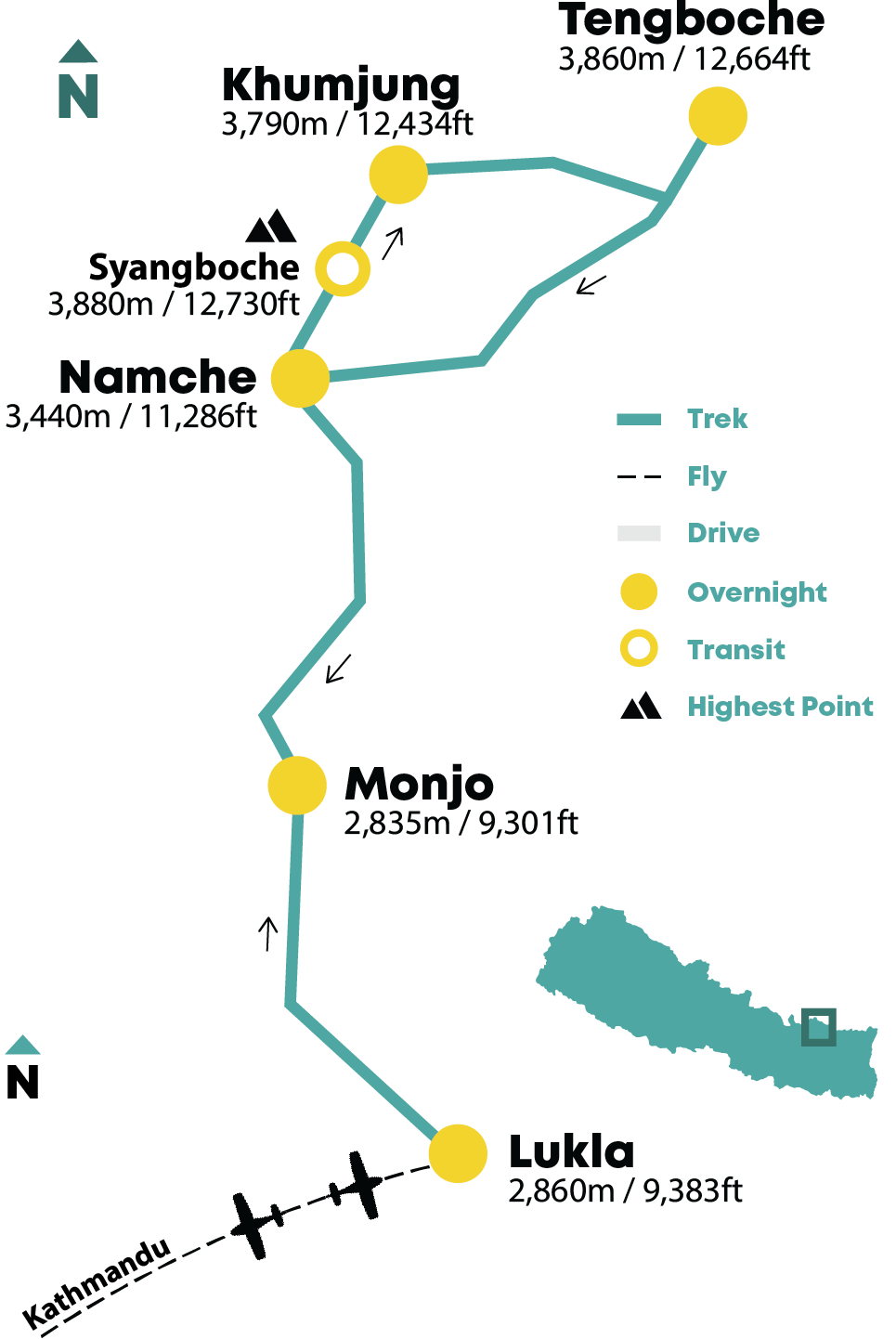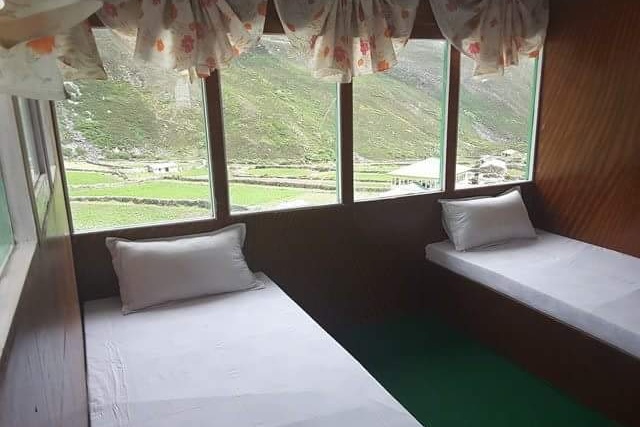|
Mountain Trek / Everest Region / Nepal Everest Skyline TrekNext tentative Date: Available as a Private Trek on a date of your preference.
Catch a close glimpse of Mt. Everest in the skyline, chant evening prayers with monks, and get baffled with yeti folklores in the famed Sherpa land. |
Overview
Catch a close glimpse of Mt. Everest in the skyline, chant evening prayers with monks, and get baffled with yeti folklores in the famed Sherpa land.
Highlights
| Experience the glorious Himalayan skyline up close with views of the most iconic mountains - including Everest, Lhotse, Nuptse, and Ama Dablam from the viewpoints of Syangboche and Tengboche. | |
| Visit Tengboche Monastery, the largest and among the most important monasteries in the Everest region, gorgeously nestled atop a hill with the iconic Khumbu mountains on the backdrop. | |
| Enjoy diverse mountain towns. Fly to the exhilarating mountain town of Lukla. Sip coffee in the hip and touristy Namche, walk the sleepy and authentic settlement of Khumjung (also housing the mystical Yeti scalp), and calm yourself in the mystical town of Tengboche. | |
| Comfort and peace of mind assured. You’ll stay in mountain lodges with good facilities. Walk past wide river trails, tiny village settlements, suspension bridges, and the rhododendron trails in the Sagarmatha National Park. |
Is this trip for me?
Our treks are designed to provide you with a comfortable pace and multiple acclimatization stops along the route. If you possess moderate fitness levels and have prior experience in multi-day trekking, the Everest Skyline Trek is the perfect choice for you. It is also suitable for families with small kids.
The trails throughout the trek are wide and well-marked. While the most part is a mix of gradual ups and downs, you’ll experience steep climbs on two days. Daily walking hours usually span between 4 to 7 hours. There are some steep climbs During the trek, you'll only need to carry a day bag, as our dedicated porters will take care of the rest of your belongings. Throughout most of the journey, we stay in standard mountain lodges that offer clean and comfortable accommodations, ensuring you have a pleasant rest at the end of each day.
Best time to go
The weather in the Himalayas varies greatly based on altitude and season. The higher you ascend, the colder and more unpredictable the conditions become.
JanFebMarAprMayJunJulAugSepOctNovDec
JanFebMarAprMayJun
JulAugSepOctNovDec
| Group Size | Price per person* |
| 4 - 7 people | USD 1215 |
| 8 and above | USD 1060 |
|
|
|
|
|
Valid until Dec 31st, 2024
Prices for expats is less by USD 100
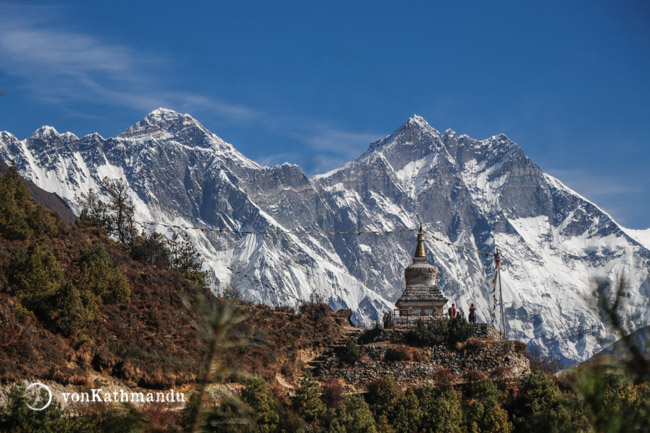
Gorgeous view of Everest and Lhotse seen from the walk from Namche towards Tengboche
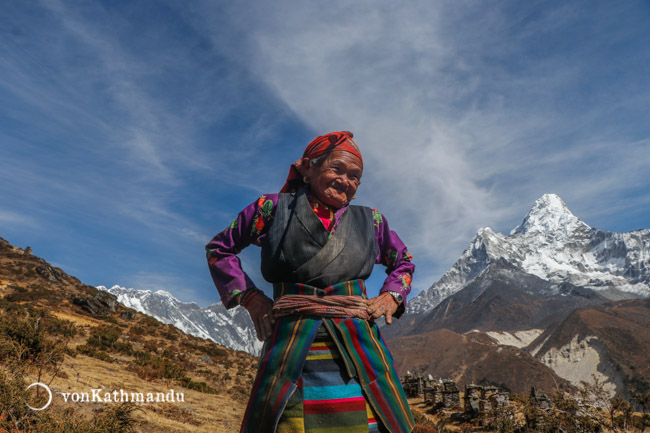
A lady in Pangboche clad in vibrant Sherpa attire called Bakkhu
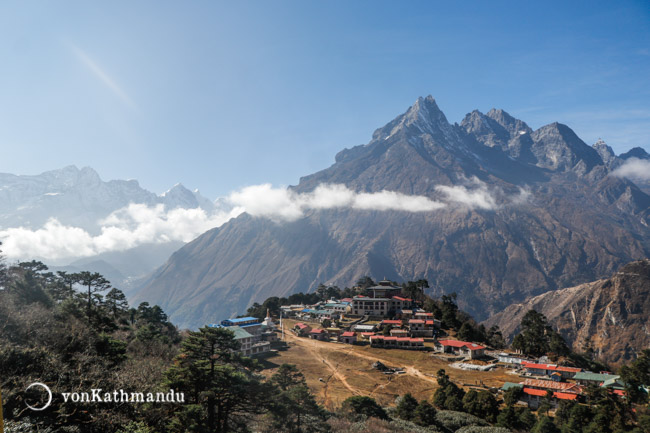
Tengboche village and monastery complemented by Kongde and Khumbila mountains
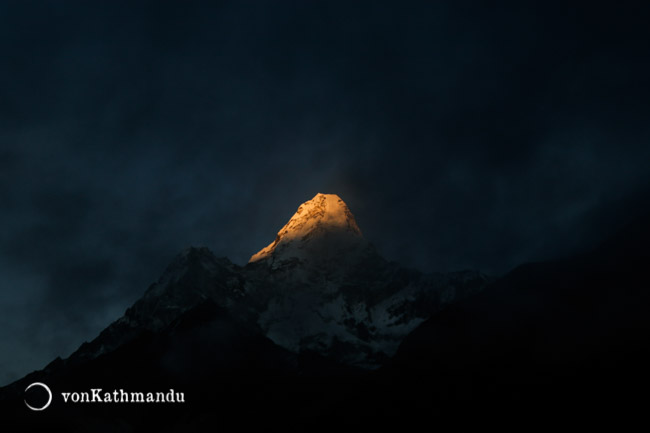
Last rays of the sun on Ama Dablam
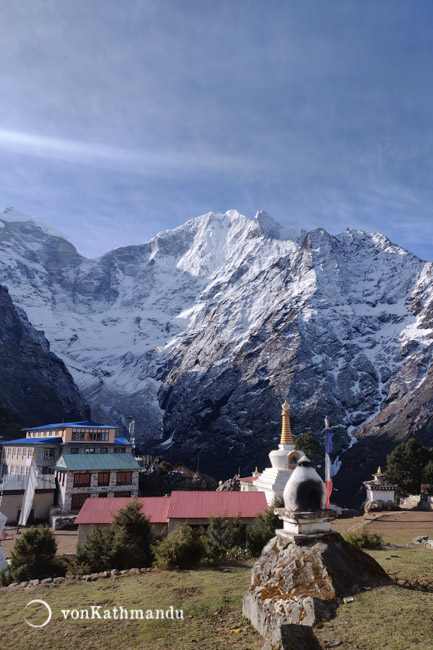
High snowcapped mountains overlook Tengboche
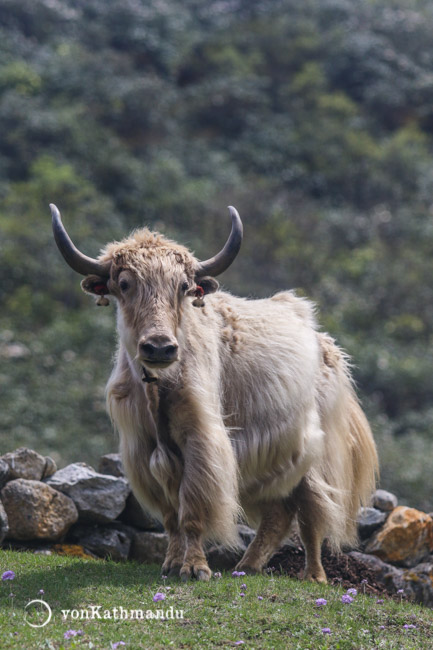
Yaks are commonly used for their wool, milk, meat and hide. Yak cake, dried yak dung, is used as fuel in the kitchen
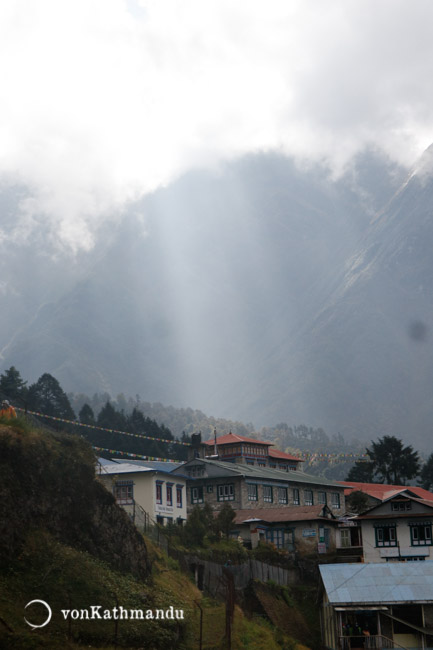
Hazy morning in Lukla
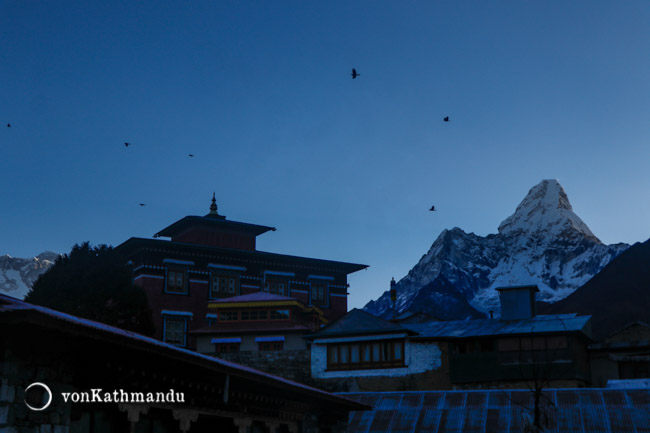
Birds in flight over Tengboche Monastery and Ama Dablam
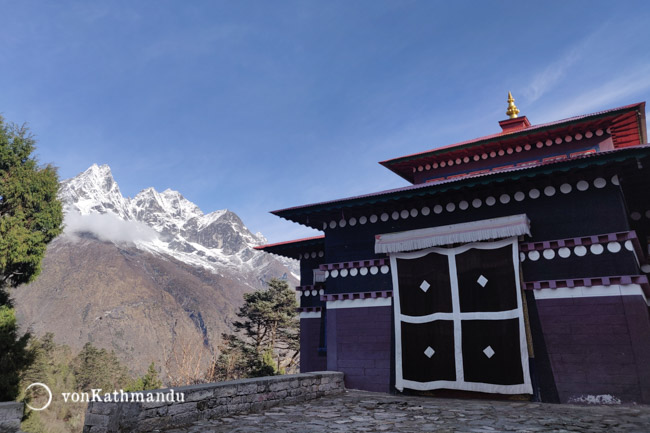
The holy Khumbila mountain and Tengboche Monastery
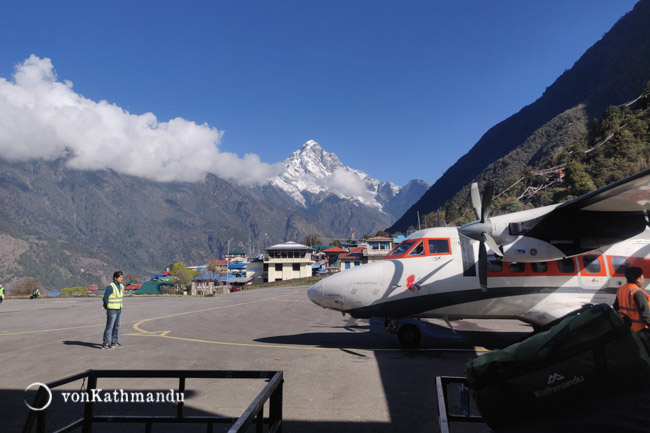
Perched on a hillside, Lukla Airpot is as thrilling as it is picturesque
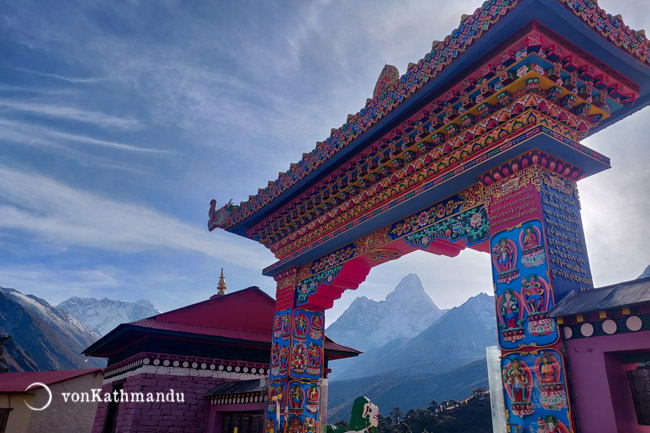
Ama Dablam seen through the ornately decorated gate of Tengboche Monastery. Everest is seen on the left of the gate.
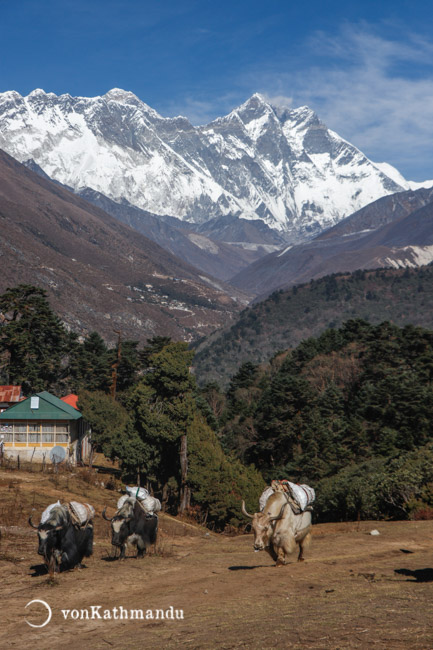
Yaks in Tengboche
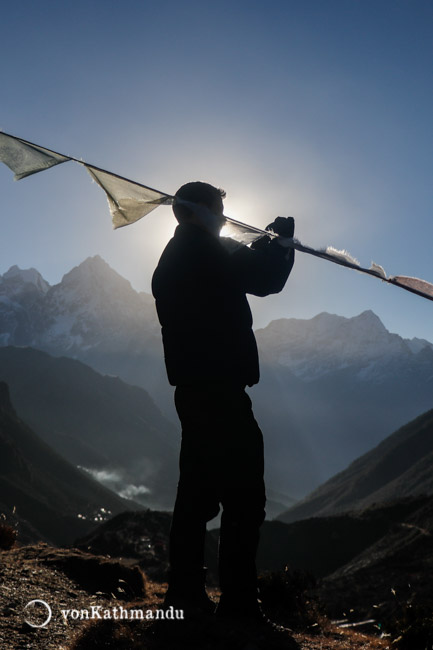
Mornings in mountains are a sight to behold
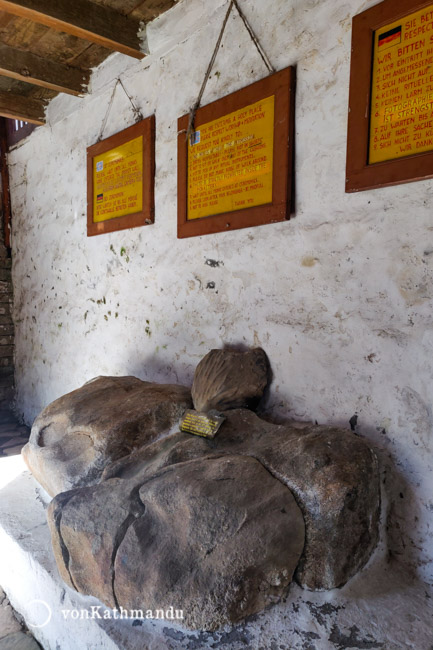
Tengboche Monastery has what is though to be a Yeti skull on display at its entrance
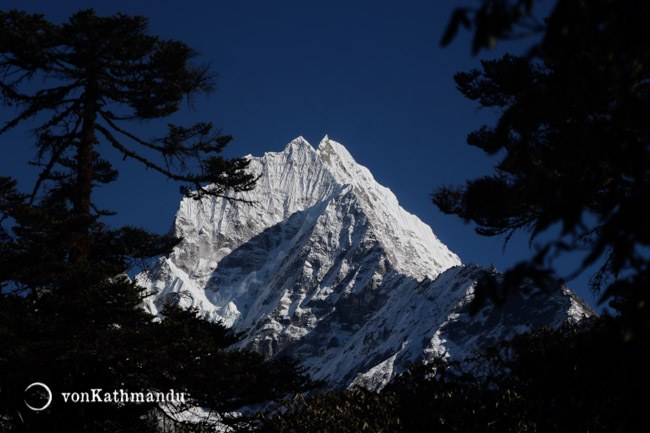
Thamsherku mountain seen through alpine vegetation of Khumjung
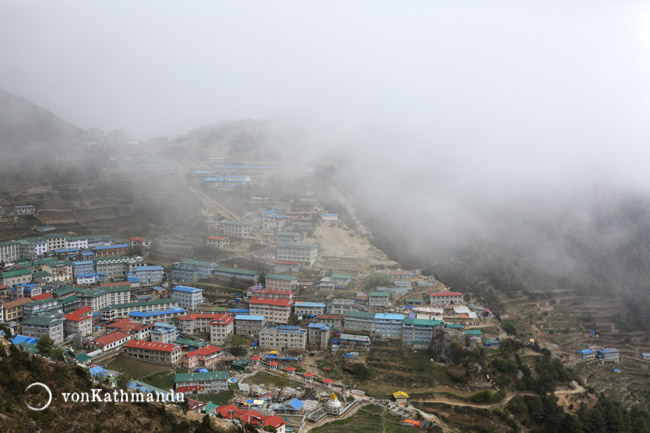
The ampitheatre of Namche Bazaar, often called the gateway to Everest
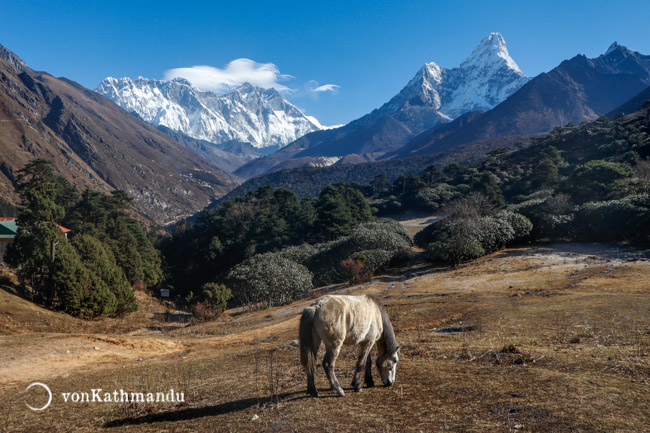
Horse grazing in Tengboche, on the horizon are Everest, Lhotse and Ama Dablam mountains
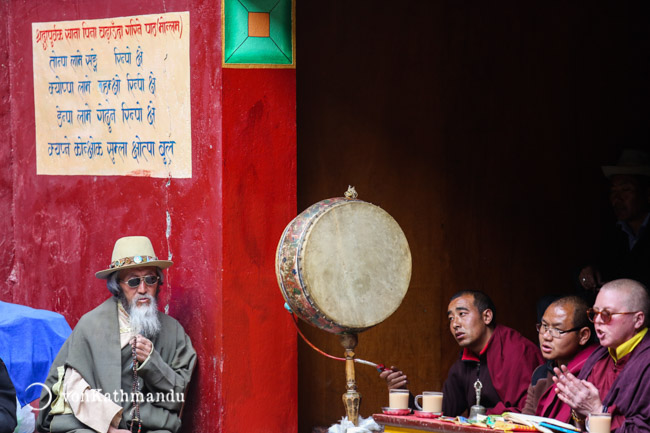
Buddhist monks at a festival in Namche
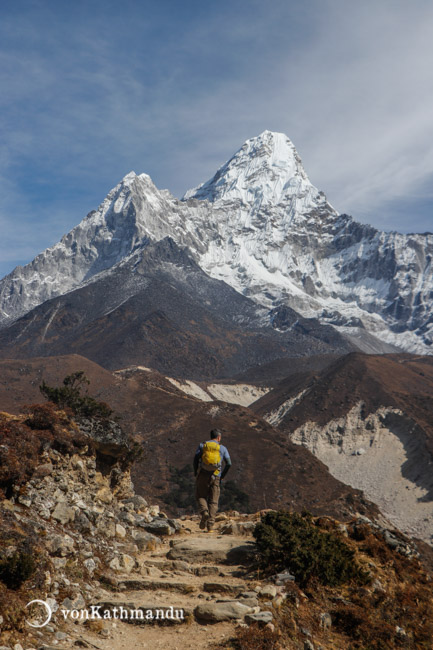
Strolling along the ridge in Pangboche
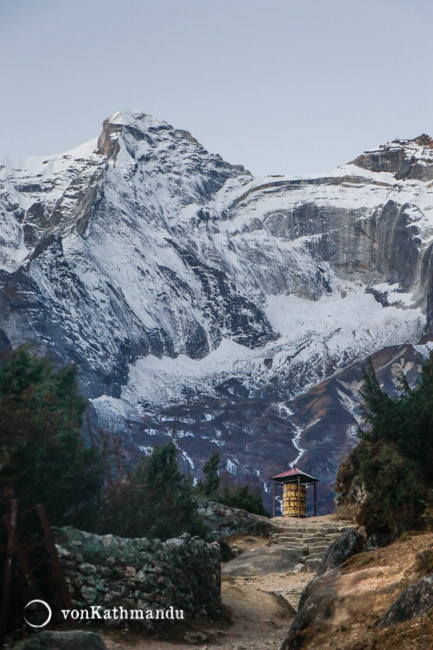
Buddhist prayer wheel in Namche outskirts beneath Kongde mountain
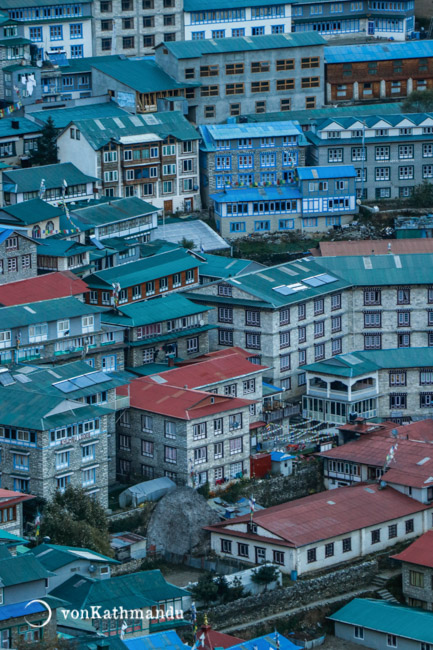
From a tiny hamlet, Namche has steady grown in the last couple of decades to become a sizeable and dense town
Itinerary
|
Day 1 |
Kathmandu - Manthali - Lukla - Monjo |
|
|
Day 2 |
Monjo - Namche |
|
|
Day 3 |
Namche - Khumjung (Acclimatization) |
|
|
Day 4 |
Khumjung - Tengboche |
|
|
Day 5 |
Tengboche - Namche |
|
|
Day 6 |
Namche - Lukla |
|
|
Day 7 |
Lukla - Manthali - Kathmandu |
|
|
Day 1 |
Kathmandu - Manthali - Lukla - Monjo |
|
|
Drive from Kathmandu to Manthali Airport 3.5 to 4.5 hrs An early morning drive from Kathmandu on winding roads takes us to Manthali, a tiny little town in Ramechhap district. Manthali Airport has been the gateway to Lukla since 2019. We start around 2 or 3 am in the morning following the Sunkoshi and Tamakoshi rivers, and reach Manthali right on time to catch the 6:30 or 7 am flight to Lukla. Note: All the flights to Lukla operate from Manthali Airport, Ramechhap during the months of March, April, May, October, November and December. |
|
|
Fly from Manthali to Lukla 20 mins A short, scenic and exhilarating mountain flight takes us from Manthali to Lukla, the gateway of Everest Region. |
|
|
Trek from Lukla to Monjo 5 to 6 hrs We meet the rest of our crew, arrange our baggages, have breakfast, and embark on a journey to Monjo, passing exciting suspension bridges and tiny village settlements following the Koshi river. |
Meals Included: Breakfast
Accommodation: Mountain Lodge
|
Day 2 |
Monjo - Namche |
|
|
Trek from Monjo to Namche 3.5 to 4 hrs We walk northward along the banks of Koshi and reach the entry point of Sagarmatha National Park, from where the gruelling uphill awaits before we reach the amphitheater town of Namche, nestled perfectly atop a hill. Spend the rest of the day exploring monasteries, mountain museums, tiny cafes and coffee bars. |
Meals Included: Breakfast
Accommodation: Mountain Lodge
|
Day 3 |
Namche - Khumjung (Acclimatization) |
|
|
Trek from Namche to Khumjung 3 to 4 hrs We take it slow and easy to the peaceful and serene settlement of Khumjung today. We stop by Hotel Everest View for a stunning view of the Everest mountain chain on the way. The green-roofed valley of Khumjung and Khunde offers several options to explore, including a monastery housing a (supposed) yeti scalp and a school established by Edmund Hillary. |
Meals Included: Breakfast
Accommodation: Mountain Lodge
|
Day 4 |
Khumjung - Tengboche |
|
|
Trek from Khumjung to Tengboche 4 to 5 hrs The walk on the first bit is a mix of minor uphills, downhills and flats with views of the picturesque Ama Dablam, followed by an arduous uphill to Tengboche. Don't miss out on the evening chants with monks in the largest, most impressive monastery in Khumbu. The aura of the town is magical, to say the least. The golden sunset over Everest and other Khumbu mountains will melt your heart away. |
Meals Included: Breakfast
Accommodation: Mountain Lodge
|
Day 5 |
Tengboche - Namche |
|
|
Trek from Tengboche to Namche 4 to 5 hrs Watch a glorious sunrise over the mountains seen from Tengboche, with the crazy color of skies and burning red of morning rays touching the summits. We pack our bags and retrace our steps back to Namche. |
Meals Included: Breakfast
Accommodation: Mountain Lodge
|
Day 6 |
Namche - Lukla |
|
|
Trek from Namche to Lukla 6 to 7 hrs The final trekking day is also a long one. We leave Namche and take the same route back to Lukla. The team will gather to share laughs and maybe raise a glass or two before flying out of Lukla the next morning. We thank porters and assistant guide, and bid them farewell. |
Meals Included: Breakfast
Accommodation: Mountain Lodge
|
Day 7 |
Lukla - Manthali - Kathmandu |
|
|
Fly from Lukla to Manthali airport 20 mins An early breakfast and we fly out of Khumbu with glimpses of the mountains we saw from the trails. |
|
|
Drive from Manthali to Kathmandu 5 to 6 hrs With memories to cherish a lifetime, we hop on our car and drive back to Kathmandu on the same roads we took the first day. |
Meals Included: Breakfast
Mountain Lodge |
X Close Popup
X Close Popup
Mountain lodges are the basic accommodation set up by locals to cater to trekkers in the trails. The common features across all lodges are standard rooms, a spacious and heated dining hall, and a restaurant with a menu. The rooms in mountain lodges generally have two or three twin beds with a mattress and blanket. If you are used to sleeping warm, we highly recommend bringing your own sleeping bag and liner. Other amenities could be a table, hanger, and dustbin but do not expect to have charging ports and attached toilets in the rooms. Moreover, it is mandatory to have meals in the facility you’re staying at.
Room Amenities
| • | Shared Toilet |
Property Amenities
| • | Restaurant and Bar | • | Outdoor Seating | • | Mountain Views |
Mountain Lodge |
X Close Popup
X Close Popup
Mountain lodges are the basic accommodation set up by locals to cater to trekkers in the trails. The common features across all lodges are standard rooms, a spacious and heated dining hall, and a restaurant with a menu. The rooms in mountain lodges generally have two or three twin beds with a mattress and blanket. If you are used to sleeping warm, we highly recommend bringing your own sleeping bag and liner. Other amenities could be a table, hanger, and dustbin but do not expect to have charging ports and attached toilets in the rooms. Moreover, it is mandatory to have meals in the facility you’re staying at.
Room Amenities
| • | Shared Toilet |
Property Amenities
| • | Restaurant and Bar | • | Outdoor Seating | • | Mountain Views |
Mountain Lodge |
X Close Popup
X Close Popup
Mountain lodges are the basic accommodation set up by locals to cater to trekkers in the trails. The common features across all lodges are standard rooms, a spacious and heated dining hall, and a restaurant with a menu. The rooms in mountain lodges generally have two or three twin beds with a mattress and blanket. If you are used to sleeping warm, we highly recommend bringing your own sleeping bag and liner. Other amenities could be a table, hanger, and dustbin but do not expect to have charging ports and attached toilets in the rooms. Moreover, it is mandatory to have meals in the facility you’re staying at.
Room Amenities
| • | Shared Toilet |
Property Amenities
| • | Restaurant and Bar | • | Outdoor Seating | • | Mountain Views |
Mountain Lodge |
X Close Popup
X Close Popup
Mountain lodges are the basic accommodation set up by locals to cater to trekkers in the trails. The common features across all lodges are standard rooms, a spacious and heated dining hall, and a restaurant with a menu. The rooms in mountain lodges generally have two or three twin beds with a mattress and blanket. If you are used to sleeping warm, we highly recommend bringing your own sleeping bag and liner. Other amenities could be a table, hanger, and dustbin but do not expect to have charging ports and attached toilets in the rooms. Moreover, it is mandatory to have meals in the facility you’re staying at.
Room Amenities
| • | Shared Toilet |
Property Amenities
| • | Restaurant and Bar | • | Outdoor Seating | • | Mountain Views |
Mountain Lodge |
X Close Popup
X Close Popup
Mountain lodges are the basic accommodation set up by locals to cater to trekkers in the trails. The common features across all lodges are standard rooms, a spacious and heated dining hall, and a restaurant with a menu. The rooms in mountain lodges generally have two or three twin beds with a mattress and blanket. If you are used to sleeping warm, we highly recommend bringing your own sleeping bag and liner. Other amenities could be a table, hanger, and dustbin but do not expect to have charging ports and attached toilets in the rooms. Moreover, it is mandatory to have meals in the facility you’re staying at.
Room Amenities
| • | Shared Toilet |
Property Amenities
| • | Restaurant and Bar | • | Outdoor Seating | • | Mountain Views |
Mountain Lodge |
X Close Popup
X Close Popup
Mountain lodges are the basic accommodation set up by locals to cater to trekkers in the trails. The common features across all lodges are standard rooms, a spacious and heated dining hall, and a restaurant with a menu. The rooms in mountain lodges generally have two or three twin beds with a mattress and blanket. If you are used to sleeping warm, we highly recommend bringing your own sleeping bag and liner. Other amenities could be a table, hanger, and dustbin but do not expect to have charging ports and attached toilets in the rooms. Moreover, it is mandatory to have meals in the facility you’re staying at.
Room Amenities
| • | Shared Toilet |
Property Amenities
| • | Restaurant and Bar | • | Outdoor Seating | • | Mountain Views |
Customize this trip
Take a heli back.
For those short on time or looking to add an exhilarating experience of flying over the majestic Himalayas, you have the option to charter a private helicopter on the way down. Inquire for prices and options!
Kathmandu Hotel and Transfers
-
If you’d like us to organize airport transfers and arrange your stay in Kathmandu or any other cities, let us know. We’re happy to give you options based on your preference, and book them for you.
Here’s one of our popular 2 days add-on: USD 185 per person:
- Airport pick up and drop off, facilitated by an English-speaking representative
- 2 nights in a four-star hotel in Kathmandu (Hotel Shankar or similar) on bed & breakfast plan and twin-sharing basis
